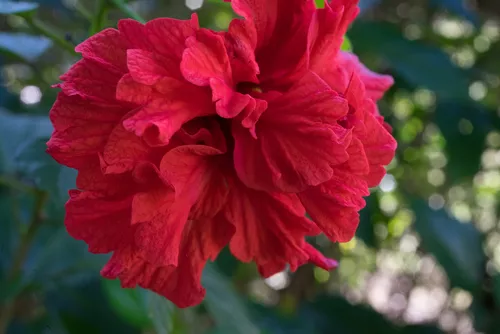- Cut indoor hibiscus in February
- Slow growth dictates pruning
- Upbringing cut to standard - that's how it works
Indoor hibiscus is displaying its magnificent blooms on this year's shoots. This behavior requires an annual pruning, so that the willingness to bloom does not flag. In these instructions you will read when and how to skilfully cut your Chinese rose mallow.
 The purpose of pruning is to encourage nice, even growth
The purpose of pruning is to encourage nice, even growth
Cut indoor hibiscus in February
The best time to cut rose marshmallow is after the winter flowering period. Under normal conditions, the exotic evergreen ornamental tree ended its blooming appearance on the windowsill and in the winter garden in February. Before the growth of new shoots with numerous flower buds begins, used blossom wood should clear the field.
Slow growth dictates pruning
With annual growth of 5 to 15 centimetres, indoor hibiscus takes it slower than its hardy counterparts in the garden bed. The leisurely pace requires a well-planned cut so that there are no gaps or you have to wait a long time to reach the desired final height. How to cut a rose mallow correctly:
- Cut off dead and disturbing shoots at the base
- Clean out wilted inflorescences for a better overview
- Prune branches that are too long to just above a leaf or leaf node
Ideally, you shorten overly long shoots via a derivation. This cutting technique aims to mitigate or completely prevent annoying gaps in appearance. Examine the offending branch for a lower, outward-facing side shoot. Place the scissor blades at the fork. The previously subordinate side branch now takes over the management position.
Upbringing cut to standard - that's how it works
As a standard, indoor hibiscus is a feast for the eyes. The piece of jewelry has its price in specialist shops when it is fully trained. As a room gardener, you enjoy the privilege of raising a young rose hibiscus to a high standard yourself. How to proceed step by step:
- Appoint the most promising shoot to the future tribe
- Fix to a bamboo stick with soft binding material
- Cut off all side branches at the base
- When the final height is reached, prune the main shoot to encourage buds to sprout
By cutting off the top bud, you trigger a sap jam below the cut point. Several shoots will then sprout. Tie the top shoot to the support rod as a trunk extension and guide it up to the desired crown height. From the remaining shoots, choose three to four promising branches as a crown framework. In the following years, cut the main branches of the crown by half every spring so that they branch out profusely.
The biggest challenge when it comes to training a high-stem is a long line of patience. Given the slow growth rate, it will take several years before you cross the longed-for finish line.
tips
Do not throw away the clippings of indoor hibiscus carelessly. With a little luck, you will discover 15 centimeter long shoot tips that are suitable for propagating cuttings. The cut should be made just below a leaf node. Remove the lower leaves and plant each cutting in its own pot with lean potting soil. A transparent hood creates the warm, humid microclimate that is important for rapid rooting.